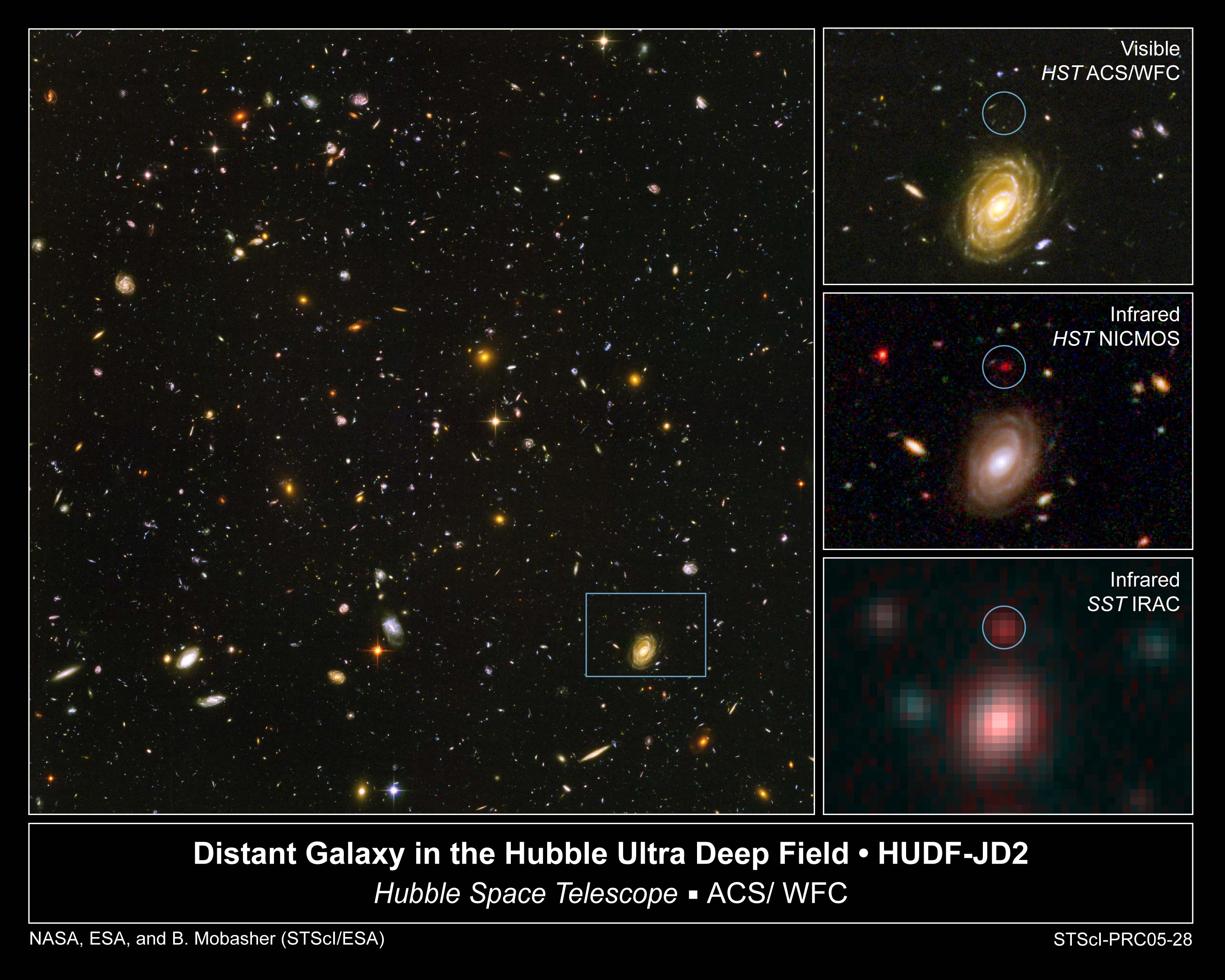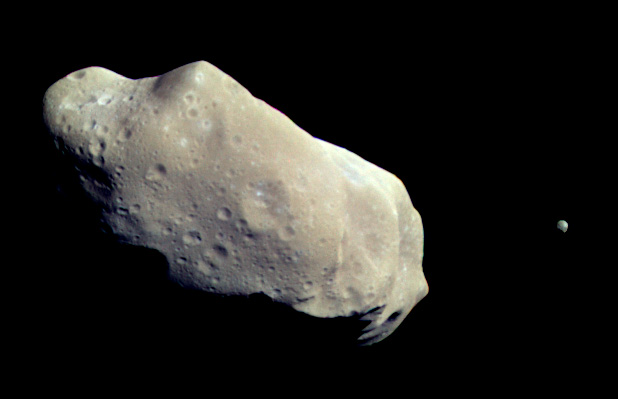|
283 Emma
283 Emma is a large asteroid of the asteroid belt and the namesake of the Emma family. It was discovered by Auguste Charlois on 8 February 1889, in Nice, France. The reason for its name is unknown. Measurements made with the IRAS observatory give a diameter of and a geometric albedo of . By comparison, the MIPS photometer on the Spitzer Space Telescope gives a diameter of and a geometric albedo of . When the asteroid was observed occulting a star, the results showed a diameter of . Satellite A companion for 283 Emma was detected on 14 July 2003 by W. J. Merline et al. using the Keck II telescope and is designated S/2003 (283) 1. The discovery was reported in the International Astronomical Union Circular (IAUC) 8165. The satellite orbits at a semi-major axis of about 581 km with an eccentricity of 0.12. Emma has a Hill sphere The Hill sphere is a common model for the calculation of a Sphere of influence (astrodynamics), gravitational sphere of influence. It is th ... [...More Info...] [...Related Items...] OR: [Wikipedia] [Google] [Baidu] |
Auguste Charlois
Auguste Honoré Charlois (; November 26, 1864 – March 26, 1910) was a French astronomer who discovered 99 asteroids while working at the Nice Observatory in southeastern France. Asteroid discovery His first discovery was the asteroid 267 Tirza in 1887. He photographed 433 Eros on the very night of its discovery by Gustav Witt, but was not able to act quickly enough before Witt announced his find. Although he started searching for asteroids in the era of visual detection, by 1891 Max Wolf had pioneered the use of astrophotography to drastically speed up the rate of detection of asteroids, and both Wolf and Charlois separately discovered far more asteroids than would have been feasible by visual detection. In 1899, Charlois received the Prix Jules Janssen, the highest award of the Société astronomique de France, the French astronomical society, and was also awarded the Valz Prize by the French Academy of Sciences in 1889 for his work on calculating asteroid orbits. Murder At ... [...More Info...] [...Related Items...] OR: [Wikipedia] [Google] [Baidu] |
Spitzer Space Telescope
The Spitzer Space Telescope, formerly the Space Infrared Telescope Facility (SIRTF), was an infrared space telescope launched in 2003, that was deactivated when operations ended on 30 January 2020. Spitzer was the third space telescope dedicated to infrared astronomy, following IRAS (1983) and ISO (1995–1998). It was the first spacecraft to use an Earth-trailing orbit, later used by the Kepler planet-finder. The planned mission period was to be 2.5 years with a pre-launch expectation that the mission could extend to five or slightly more years until the onboard liquid helium supply was exhausted. This occurred on 15 May 2009. Without liquid helium to cool the telescope to the very low temperatures needed to operate, most of the instruments were no longer usable. However, the two shortest-wavelength modules of the IRAC camera continued to operate with the same sensitivity as before the helium was exhausted, and continued to be used into early 2020 in the Spitzer Warm Mission ... [...More Info...] [...Related Items...] OR: [Wikipedia] [Google] [Baidu] |
Binary Asteroids
A binary asteroid is a system of two asteroids orbiting their common barycenter. The binary nature of 243 Ida was discovered when the Galileo spacecraft flew by the asteroid in 1993. Since then numerous binary asteroids and several triple asteroids have been detected. The mass ratio of the two components – called the "primary" and "secondary" of a binary system – is an important characteristic. Most binary asteroids have a large mass ratio, i.e. a relatively small satellite in orbit around the main component. Systems with one or more small moons – also called "companions" or simply "satellites" – include 87 Sylvia, 107 Camilla and 45 Eugenia (all triples), 121 Hermione, 130 Elektra (a quadruple), 22 Kalliope, 283 Emma, 379 Huenna, 243 Ida and 4337 Arecibo (in order of decreasing primary size). Some binary systems have a mass ratio near unity, i.e., two components of similar mass. They include 90 Antiope, , and 69 ... [...More Info...] [...Related Items...] OR: [Wikipedia] [Google] [Baidu] |
Named Minor Planets
Named may refer to something that has been given a name. Named may also refer to: * named (computing), a widely used DNS server * Naming (parliamentary procedure) * The Named (band), an American industrial metal group In literature: * ''The Named'', a fantasy novel by Marianne Curley * The Named, a fictional race of prehistoric big cats, depicted in ''The Books of the Named'' series by Clare Bell See also * Name (other) * Names (other) Names are words or terms used for identification. Names may also refer to: * ''Names'' (EP), by Johnny Foreigner * ''Names'' (journal), an academic journal of onomastics * The Names (band), a Belgian post-punk band * ''The Names'' (novel), b ... * Naming (other) {{disambiguation ... [...More Info...] [...Related Items...] OR: [Wikipedia] [Google] [Baidu] |
Discoveries By Auguste Charlois
Discoveries may refer to: Media Film and television * ''Discoveries'' (film), a 1939 British film * ''Discoveries'' (TV series), a Canadian youth science television series * "Discoveries", a Series D episode of the television series ''QI'' (2006) * "Discoveries" (''Hotel Portofino''), a 2022 TV episode Literature * ''Discoveries'' (Robertson Davies), a 2002 book by Robertson Davies * ''Abrams Discoveries'', a series of illustrated non-fiction books published by Harry N. Abrams * ''Discoveries'', a work by William Butler Yeats, written in 1907 * ''Discoveries'', a magazine published by Cedars-Sinai Medical Center Music * ''Discoveries'' (Cannonball Adderley album), 1955 * ''Discoveries'' (Josh Nelson album), 2011 * ''Discoveries'' (Northlane album), 2011 Other uses * Discoveries (horse), a racehorse See also * Age of Discoveries * Discovery (other) * Explorations (other) Exploration is the process of discovery. Exploration or explorations may ... [...More Info...] [...Related Items...] OR: [Wikipedia] [Google] [Baidu] |
Very Large Telescope
The Very Large Telescope (VLT) is an astronomical facility operated since 1998 by the European Southern Observatory, located on Cerro Paranal in the Atacama Desert of northern Chile. It consists of four individual telescopes, each equipped with a primary mirror that measures in diameter. These optical telescopes, named ''Antu'', ''Kueyen'', ''Melipal'', and ''Yepun'' (all words for astronomical objects in the Mapuche language), are generally used separately but can be combined to achieve a very high angular resolution. The VLT array is also complemented by four movable Auxiliary Telescopes (ATs) with apertures. The VLT is capable of observing both visible and infrared wavelengths. Each individual telescope can detect objects that are roughly four billion times fainter than what can be seen with the naked eye. When all the telescopes are combined, the facility can achieve an angular resolution of approximately 0.002 arcsecond. In single telescope mode, the angular resol ... [...More Info...] [...Related Items...] OR: [Wikipedia] [Google] [Baidu] |
Hill Sphere
The Hill sphere is a common model for the calculation of a Sphere of influence (astrodynamics), gravitational sphere of influence. It is the most commonly used model to calculate the spatial extent of gravitational influence of an astronomical body (''m'') in which it dominates over the gravitational influence of other bodies, particularly a Primary (astronomy), primary (''M''). It is sometimes confused with other models of gravitational influence, such as the Laplace sphere or being named the Roche sphere, the latter causing confusion with the Roche limit. It was defined by the United States, American astronomer George William Hill, based on the work of the France, French astronomer Édouard Roche. To be retained by a more gravitationally attracting astrophysical object—a planet by a more massive star, a natural satellite, moon by a more massive planet—the less massive body must have an orbit that lies within the gravitational potential represented by the more massive body ... [...More Info...] [...Related Items...] OR: [Wikipedia] [Google] [Baidu] |
Semi-major Axis
In geometry, the major axis of an ellipse is its longest diameter: a line segment that runs through the center and both foci, with ends at the two most widely separated points of the perimeter. The semi-major axis (major semiaxis) is the longest semidiameter or one half of the major axis, and thus runs from the centre, through a focus, and to the perimeter. The semi-minor axis (minor semiaxis) of an ellipse or hyperbola is a line segment that is at right angles with the semi-major axis and has one end at the center of the conic section. For the special case of a circle, the lengths of the semi-axes are both equal to the radius of the circle. The length of the semi-major axis of an ellipse is related to the semi-minor axis's length through the eccentricity and the semi-latus rectum \ell, as follows: The semi-major axis of a hyperbola is, depending on the convention, plus or minus one half of the distance between the two branches. Thus it is the distance from the ce ... [...More Info...] [...Related Items...] OR: [Wikipedia] [Google] [Baidu] |
International Astronomical Union
The International Astronomical Union (IAU; , UAI) is an international non-governmental organization (INGO) with the objective of advancing astronomy in all aspects, including promoting astronomical research, outreach, education, and development through global cooperation. It was founded on 28 July 1919 in Brussels, Belgium and is based in Paris, France. The IAU is composed of individual members, who include both professional astronomers and junior scientists, and national members, such as professional associations, national societies, or academic institutions. Individual members are organised into divisions, committees, and working groups centered on particular subdisciplines, subjects, or initiatives. the Union had 85 national members and 12,734 individual members, spanning 90 countries and territories. Among the key activities of the IAU is serving as a forum for scientific conferences. It sponsors nine annual symposia and holds a triannual General Assembly that sets policy ... [...More Info...] [...Related Items...] OR: [Wikipedia] [Google] [Baidu] |
Keck Telescopes
The W. M. Keck Observatory is an astronomical observatory with two telescopes at an elevation of 4,145 meters (13,600 ft) near the summit of Mauna Kea in the U.S. state of Hawaii. Both telescopes have aperture primary mirrors, and, when completed in 1993 (Keck I) and 1996 (Keck II), they were the largest optical reflecting telescopes in the world. They have been the third and fourth largest since 2006. Overview With a concept first proposed in 1977, telescope designers Terry Mast, of the University of California, Berkeley, and Jerry Nelson of Lawrence Berkeley Laboratory had been developing the technology necessary to build a large, ground-based telescope. In 1985, Howard B. Keck of the W. M. Keck Foundation gave $70 million to fund the construction of the Keck I telescope, which began in September 1985. First light occurred on November 24, 1990, using 9 of the eventual 36 segments. When construction of the first telescope was well advanced, further donations ... [...More Info...] [...Related Items...] OR: [Wikipedia] [Google] [Baidu] |
Occultation
An occultation is an event that occurs when one object is hidden from the observer by another object that passes between them. The term is often used in astronomy, but can also refer to any situation in which an object in the foreground blocks from view (occults) an object in the background. In this general sense, occultation applies to the visual scene observed from low-flying aircraft (or computer-generated imagery) when foreground objects obscure distant objects dynamically, as the scene changes over time. If the closer body does not entirely conceal the farther one, the event is called a '' transit''. Both transit and occultation may be referred to generally as ''occlusion''; and if a shadow is cast onto the observer, it is called an eclipse. The symbol for an occultation, and especially a solar eclipse, is 🝵 (U+1F775 🝵). Occultations by the Moon The term occultation is most frequently used to describe lunar occultations, those relatively frequent occasions wh ... [...More Info...] [...Related Items...] OR: [Wikipedia] [Google] [Baidu] |




